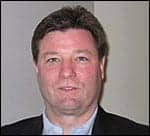
Binseng Wang, ScD, CCE, FAIMBE, FACCE

Britton E. Berek, MBA, CCE, CHFM, CPMM, CJCS
No, this is not about political debates. We are referring to the clarification of the perceived discrepancy surrounding medical equipment scheduled maintenance that existed for many years between the Interpretive Guidelines issued by the Centers for Medicare and Medicaid Services (CMS) and The Joint Commission’s (TJC) Environment of Care (EC) standards.
As most readers know, CMS enforces the Conditions of Participation (CoPs) and Conditions for Coverage as the minimum health and safety standards that providers and suppliers must meet for Medicare and Medicaid certification and reimbursement. The CoPs for hospitals are codified in 42 CFR 482 and do not have any prescriptive requirements for medical equipment maintenance—except for generic statements such as, “Equipment must be maintained to ensure an acceptable level of safety and quality” (A-0331).” However, in its publication #100-07—State Operations Manual (SOM), CMS provides the following interpretation and guidelines for state inspectors when they evaluate medical equipment maintenance (a similar statement is also made for radiological equipment, A-0271): “There must be a regular periodical maintenance and testing program for medical devices and equipment. A qualified individual such as a clinical or biomedical engineer, or other qualified maintenance person must monitor, test, calibrate, and maintain the equipment periodically in accordance with the manufacturer’s recommendations and Federal and State laws and regulations. Equipment maintenance may be conducted using hospital staff, contracts, or through a combination of hospital staff and contracted services.”
On the other hand, for many years TJC allowed its accredited organizations to tailor their maintenance programs to meet actual needs. The 2011 TJC EC standards states: “The hospital maintains either a written inventory of all medical equipment or a written inventory of selected equipment categorized by physical risk associated with use (including all life support equipment) and equipment incident history.” (EC.02.04.01-EP2) “The hospital identifies the activities, in writing, for maintaining, inspecting, and testing for all medical equipment on the inventory.” (EC.02.04.01-EP3) “The hospital identifies, in writing, frequencies for inspecting, testing, and maintaining medical equipment on the inventory based on criteria such as manufacturers’ recommendations, risk levels, or current hospital experience.” (EC.02.04.01-EP4)
The main issue here is whether a material difference exists between the statements “in accordance with the manufacturer’s recommendations” and “criteria such as manufacturers’ recommendations.” One could argue that there is a difference if the SOM is interpreted literally as requiring all maintenance be performed per manufacturer’s recommendation (that is, using its procedures and maintenance frequencies), while EC allows hospitals to consider risk levels and experience in addition to manufacturer’s recommendations. While most state inspectors understand that SOM are guidelines based on CMS interpretation and not legal requirements, some are less flexible. An informal survey conducted by Matthew F. Baretich, PE, PhD, a couple of years ago uncovered 12 cases from 11 states in which hospitals were cited by state inspectors for not performing maintenance per manufacturers’ recommendations.
According to TJC Senior Engineer George Mills, CMS asked TJC to clarify this perceived discrepancy earlier last year. Instead of simply revising EC standards to echo CMS interpretive guidelines, TJC chose to work collaboratively with CMS in resolving this matter. Mills spent several months and countless e-mails explaining the evolution of medical equipment maintenance in the last 3 decades and the rationale of providing hospitals with the flexibility to customize their programs to meet the actual needs of the equipment. Furthermore, he cited evidence that equipment in TJC-accredited hospitals has been progressively safer and more effective for patients during the evolution of EC standards. Thanks to Mills’ extraordinary efforts, CMS finally understood the advantage of using a rational and systematic approach to plan and implement equipment maintenance, even modifying manufacturers’ recommendations when justified by hospital experience.
Therefore, clinical engineering (CE) professionals who work in TJC-accredited hospitals can be less anxious when confronted by state inspectors asking why their maintenance frequencies and procedures are not exactly identical to those recommended by the respective manufacturers. In addition to responding that CMS has reviewed and accepted TJC’s explanation of the EC standards, CE professionals should explain how they monitor the overall safety and effectiveness of their medical equipment management program. While this does not prevent fickle inspectors and mock surveyors from misinterpreting CMS guidelines and making unreasonable demands or recommendations, CE professionals are now better equipped to defend themselves. Furthermore, this will also help those located in states that have incorporated SOM verbiage into their licensing codes (for example, Indiana and Louisiana) to seek waivers or perhaps eventual code revision.
Now that Mills has fought for us, CE professionals should continue to provide him (as well as TJC, CMS, and, ultimately, the patients) with concrete evidence that we take our duties responsibly and seriously. In addition to planning and implementing good maintenance programs, we need to carefully monitor the actual outcomes of our efforts (that is, using the failure coding approach1-3) and continually improve our maintenance plans whenever needed (that is, practice evidence-based maintenance). Furthermore, as analyses of Sentinel Events, MedWatch reports, and our own service records3 have shown, most of these failures are related to use errors, environment failures, accessories, and rechargeable batteries, so CE professionals need to help the clinical users, material management professionals, and facilities managers to improve the planning, acquisition, and use of medical equipment so patients can receive better and safer care.
Binseng Wang, ScD, CCE, FAIMBE, FACCE, is vice president, performance management and regulatory compliance, ARAMARK Healthcare’s Clinical Technology Services, Charlotte, NC. Britton E. Berek, MBA, CCE, CHFM, CPMM, CJCS, is director of regulatory compliance, ARAMARK Healthcare’s Hospitality Services, Downers Grove, Ill. For more information, contact .
References
- Wang B, Fedele J, Pridgen B, et al. Evidence-based maintenance: Part I: Measuring maintenance effectiveness with failure codes. J Clin Eng. 2010;35(3):132-144.
- Wang B, Fedele J, Pridgen B, et al. Evidence-based maintenance: Part II: Comparing maintenance strategies using failure codes. J Clin Eng. 2010;35(4):223-230.
- Wang B, Fedele J, Pridgen B, et al. Evidence-based maintenance: Part III: Enhancing patient safety using failure code analysis. J Clin Eng. In press.
What’s on Your Mind?Got a gripe? A recommendation? Does someone or something deserve praise? Share your opinions and insights with your peers. Soapbox columns should be 850 to 900 words in length and can be e-mailed to . |





